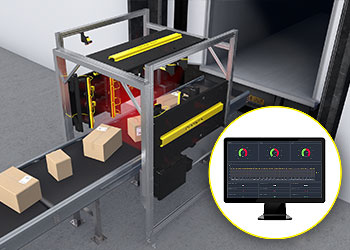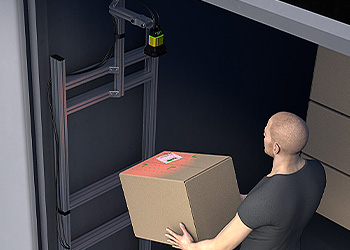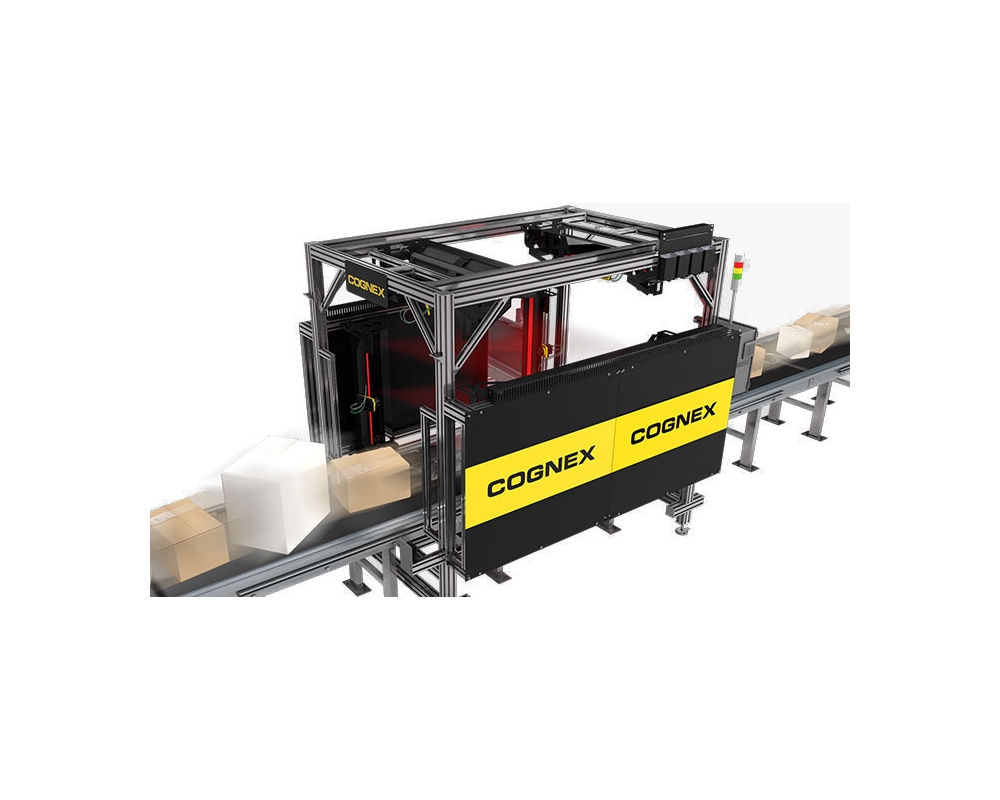Logistics code reading system and modular visual channel
Deliver more products and shipments to the right destination on time and at the best cost
| As demand continues to grow, retail distribution, e-commerce fulfillment and package processing plants are under increasing pressure to get products to customers. Reliable and extremely accurate machine vision and barcode reader solutions help operations teams improve traceability, load trucks more efficiently, and ensure outbound shipments get to the right place on time and at the best cost. Status becomes more and more important. Using the performance feedback and analytical insights these solutions provide, companies can fine-tune outbound operations to identify problems before they become larger and more costly. | .jpg) |
Load outbound trucks faster while improving traceability and reducing manual handling
| Retail distributors and shipping factories are looking for ways to improve traceability from the entry into the warehouse to the exit of the warehouse. In order to achieve "zero loss" of products from entering to leaving the factory, the management team has become more and more focused on work quality and asset management (to minimize losses), and verifying which items are sent to the outgoing trucks is more efficient than ever before. more important. Many organizations rely on the accuracy of cargo sorters to ensure the correct product is loaded onto trucks. However, this approach may not necessarily achieve the established loss target. Shipments can still be lost, stolen, or placed in the wrong shipping lane. Products passing through the sorting machine may be incorrectly classified due to poor barcode quality and the inability of the scanning system to read the barcode. Dozens of shipments are lost in distribution centers every day, and it is not uncommon for tens of thousands to be lost each year. When products are not delivered on time or not at all, in addition to incurring internal costs, it can also have a negative impact on customer expectations and brand reputation. Many companies use handheld scanners at terminal gates as a base point for traceability, or do nothing at all. Workers need to spend additional time picking up the scanner, scanning the case, putting the scanner down, and loading the case onto the truck, causing unnecessary delays. |
 |
Cognex can provide some ways to improve tracking capabilities at the door of the outbound terminal. The scope of the solution varies depending on many factors, including how many workers are needed for the outbound logistics process at the factory and throughput requirements. Adding touch points (operators) increases operating time and costs, so finding the right balance of automation and operator resources is key.
Cognex's outbound logistics scanning solution, equipped with DataMan 370 and DataMan 470 barcode readers, provides a hands-free solution for quickly, efficiently and accurately reading barcodes. Using advanced algorithms and decoding technology, Cognex barcode readers provide a read rate of up to 99.9%, even if the barcode is damaged, dirty, torn, or even covered with reflective material. Cognex code readers capture and transmit output data and images, which can be used by factory supervisors to provide quality indicators and identify problems more quickly in upstream processes, saving time and money and minimizing rework.
 |
Hands-free barcode reading application at collection terminals Cognex's hands-free barcode reading solution, equipped with DataMan imager barcode readers, provides a solution for reading barcodes quickly, efficiently and accurately. The overhead scanning configuration means operators can read and load more boxes per minute than using handheld or ring scanners. In addition, this hands-free approach, which can be applied at the dock gate, ensures that the correct items are shipped at the distribution or shipping facility, improves inventory accuracy, reduces costly returns, and improves overall shipment traceability . |
Output visual channel
Cognex modular vision channels are specially designed for factories with high-volume distribution, which require high output and a higher degree of automation, reducing manual processing and improving traceability, as well as reducing operating costs. Equipped with DataMan image-based barcode readers, these vision channels provide comprehensive, high-speed code reading coverage regardless of bar code location or condition. In addition, Cognex visual channel uses advanced algorithms, one-dimensional/two-dimensional fast sorting, 1DMax with Hotbars technology, 2DMax with PowerGrid technology and other advanced algorithms, which can accurately read barcodes at extreme angles (up to 85 degrees) , allowing shipments and packages to be placed closer together to increase throughput.


Pallets are stacked and shipped out of the warehouse
Stack pallets faster, improving overall truck loading efficiency
| Distribution plants are always looking for more efficient ways to load and unload trucks entering and exiting the plant faster, increasing their capacity. In many cases, shipments are loaded one by one onto trucks and stacked manually. In order to achieve efficiency requirements, factories tend to stack pallets before shipping out of warehouses, which saves time and money and protects products during transportation. When performing the pallet stacking process, each item needs to be scanned before being placed on the pallet. Traditionally, laser-based handheld scanners have been used for this purpose. However, these scanners have difficulty reading damaged or dirty barcodes, which means operators must spend time printing new labels for shipments, adding time and money to the process. Additionally, because handheld scanners require one hand to operate, the overall process of picking items, scanning them, and placing them on pallets is inefficient. |
.jpg) |
The overhead-mounted Cognex image-based display scanning solution equipped with DataMan 370 and DataMan 470 barcode readers provides a solution for fast, efficient and accurate barcode reading in a hands-free manner. The overhead scanning configuration means operators can read and stack pallets more quickly than using handheld or ring scanners. Additionally, this approach ensures that the correct items are shipped from the fulfillment or shipping facility, improves inventory accuracy, reduces costly returns, and improves overall shipment traceability. Cognex barcode readers use advanced algorithms to easily decode even severely damaged, deformed, blurred or low-contrast label barcodes, leading the industry with a 99.9% read rate, thereby improving the efficiency of distribution factories. and reduce costs.
Shipping train optimization
Optimize shipping costs and reduce the risk of fragile items being damaged during shipping
| Retail resellers and e-commerce fulfillment centers are shipping and shipping more packages than ever before. From a financial perspective, it is necessary to arrange shipments out of the warehouse so that the maximum number of shipments can be loaded onto trucks or other vehicles in the best order. A truck that is only partially loaded will have a higher delivery cost per item than a truck that is fully loaded. Many organizations load trucks and delivery vehicles based on assumed best-case scenarios, resulting in inefficiencies and increased costs. Boxes (cubes) and irregularly shaped items (non-cubes) must be manually separated before being loaded onto trucks, which is not an efficient operation when handling an ever-increasing number and variety of package types. Handling shipments manually can slow down the loading process. | .jpg) |
Cognex 3D-A1000 dimensional marking system can capture and provide accurate size and volume packaging information, helping organizations to more accurately and perfectly understand the situation of outbound shipments. Using this information, the outbound workflow can sort by size and shipment classification, stack the boxes and fill the gaps with non-cubic items. The 3D-A1000 is simple to set up and use, reducing delivery costs and optimally loading trucks, delivery vehicles and containers. When outbound vehicles and containers are loaded optimally, there is little chance of items being crushed or damaged during transportation and resulting in shipping losses.

